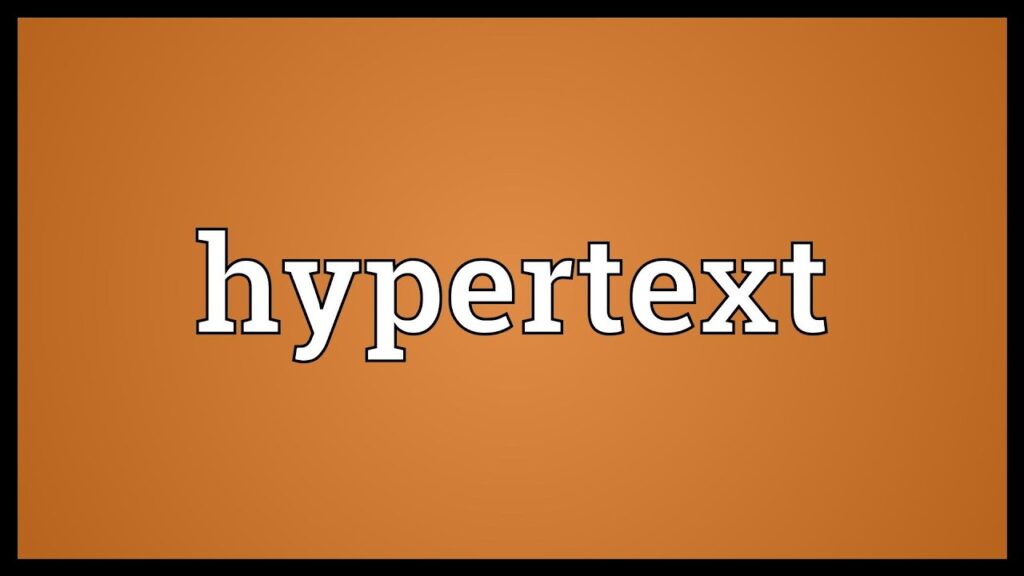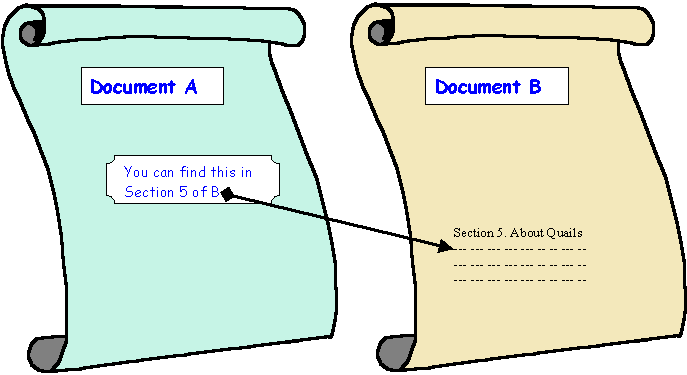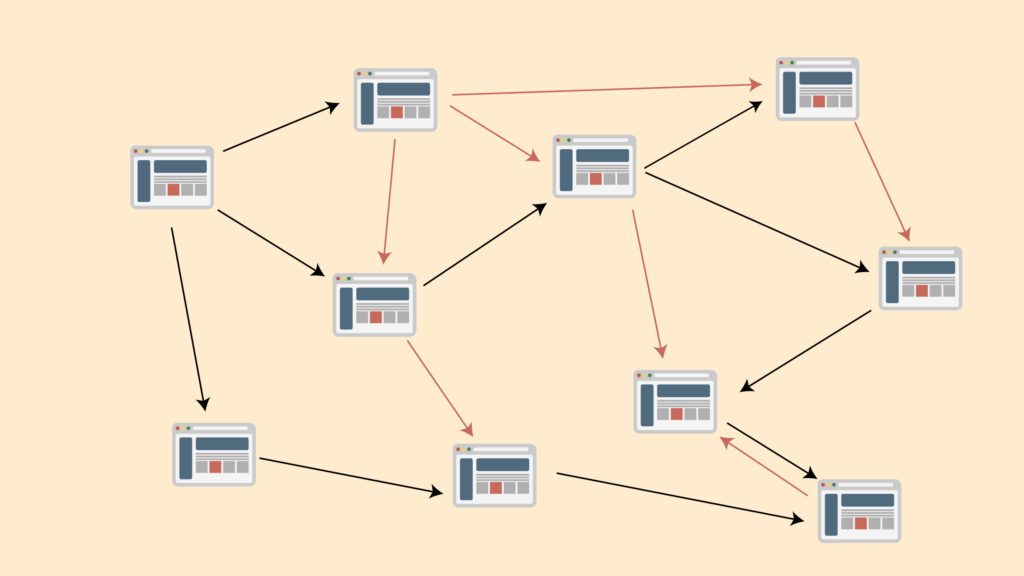What is hypertext? Hypertext is a term that has become increasingly popular in recent years, especially with the rise of the internet and digital technology. But what exactly is hypertext? In simple terms, hypertext refers to text that contains links to other pieces of text, allowing users to navigate between them with ease.
The concept of hypertext can be traced back to the 1940s, when Vannevar Bush first proposed the idea of a “memex” – a device that would allow users to store and access information in a non-linear way. However, it wasn’t until the development of the internet in the 1990s that hypertext truly came into its own.
Today, hypertext is an integral part of the online experience, allowing users to seamlessly move between web pages, articles, and other forms of digital content. Whether you’re browsing the web, reading an e-book, or using a mobile app, chances are you’re interacting with hypertext in some way. In the following sections, we’ll explore the history and evolution of hypertext, as well as its many applications in the modern world.
Fundamentals of Hypertext

Definition and Origins
Hypertext is a term that describes a type of electronic text that contains links to other related content. The concept of hypertext was first introduced by Ted Nelson in the 1960s, and later popularized by Douglas Engelbart in the 1980s. The term itself was first coined by Nelson in his 1965 book “Literary Machines”.
Hypertext is essentially a non-linear way of presenting information, allowing users to navigate through a web of interconnected content. This is achieved through the use of hyperlinks, which are clickable elements that take users to other parts of the text or to external resources.
Key Concepts
There are several key concepts that are important to understand when it comes to hypertext. These include:
- Links: As mentioned, links are the backbone of hypertext. They allow users to move seamlessly between different pieces of content, creating a web-like structure that is easy to navigate.
- Nodes: Nodes are individual pieces of content within a hypertext document. These can be anything from a single word to an entire page of text.
- Anchors: Anchors are used to create links within a document. They are essentially markers that allow users to jump to a specific point within a piece of content.
- Browsing: Browsing is the act of moving through a hypertext document by following links. This can be done in a non-linear fashion, allowing users to explore content in a way that makes sense to them.
Hypertext has become an integral part of the modern web, with websites and online resources relying heavily on links to connect users with related content. As Merriam-Webster puts it, hypertext is “a database format in which information related to that on a display can be accessed directly from the display”.
Dynamic Hypertext
As the name suggests, dynamic hypertext refers to the ability to change the content of a hypertext document based on user interaction. This means that the content of a web page can change depending on the user’s input or actions. Dynamic hypertext is a key component of modern web development and is made possible by the integration of JavaScript.
JavaScript Integration
JavaScript is a programming language that allows developers to create interactive web pages. It is used extensively in web development to add functionality to web pages, such as form validation, animations, and dynamic content. When integrated with hypertext, JavaScript allows developers to create dynamic and interactive web pages that can respond to user input in real-time.
For example, a web page that uses dynamic hypertext might display different content depending on the user’s location or the time of day. This can be achieved by using JavaScript to detect the user’s location or the current time and then dynamically updating the content of the web page.
In addition to changing the content of a web page, JavaScript can also be used to create interactive elements such as drop-down menus, sliders, and pop-up windows. These elements allow users to interact with the web page in a more intuitive and engaging way, making the overall user experience more enjoyable.
Overall, dynamic hypertext is a powerful tool for web developers that allows them to create engaging and interactive web pages. By integrating JavaScript into hypertext, developers can create web pages that respond to user input in real-time, providing a more engaging and personalized user experience.
Advanced Hypertext Features

As hypertext technology evolved, advanced features were added to make web pages more interactive and engaging. Here are some of the most notable advanced hypertext features:
Multimedia Integration
One of the most significant advancements in hypertext technology is the ability to integrate multimedia elements such as images, audio, and video into web pages. This feature has been instrumental in making websites more engaging and interactive. With multimedia integration, web designers can create visually stunning and dynamic pages that capture the attention of their audience. With multimedia integration, web designers can create visually stunning and dynamic pages that capture the attention of their audience. The integration of a talking photo will elevate this engagement by combining visual appeal with audio interaction, offering a captivating way to hold visitors’ focus.
Interactive Forms
Interactive forms are another advanced hypertext feature that has made web pages more interactive. Forms are used to collect information from users, and interactive forms allow users to interact with the website in real-time. This feature has been instrumental in creating online stores, surveys, and other types of web applications that require user input.
Data Tables
Data tables are another advanced hypertext feature that has made web pages more informative and useful. With data tables, web designers can present complex information in an organized and easy-to-read format. This feature has been instrumental in creating websites that provide users with access to large amounts of data, such as financial reports, product catalogs, and scientific research.
Advanced hypertext features have revolutionized the way web pages are designed and presented. With multimedia integration, interactive forms, and data tables, web designers can create engaging and informative pages that provide users with a rich and interactive experience.
Hypertext and the Internet
As the internet became more widespread, hypertext became an essential part of navigating and accessing information. The World Wide Web, or simply the web, is a vast collection of interconnected documents and resources that use hypertext to link them together. The web was created by Tim Berners-Lee in 1989, and it quickly became the most popular way to access information on the internet.
World Wide Web
The World Wide Web is built on top of the internet, which is a global network of interconnected computers. The web allows users to access and share information over the internet using web browsers, such as Google Chrome, Firefox, and Safari. Hypertext is used to link web pages together, allowing users to easily navigate between them.
Web pages are typically written in HTML, or Hypertext Markup Language, which is a markup language used to create web pages. HTML allows web developers to create links, images, and other multimedia content that can be accessed by users.
Internet Protocols
The internet is built on a set of protocols, which are rules that govern how data is transmitted over the network. One of the most important protocols used on the internet is the Transmission Control Protocol/Internet Protocol (TCP/IP). TCP/IP is used to transmit data between computers on the internet, and it ensures that data is transmitted reliably and efficiently.
Hypertext Transfer Protocol (HTTP) is another important protocol used on the internet. HTTP is used to transfer data between web servers and web browsers. When a user requests a web page, the web server sends the page to the user’s browser using HTTP.
Hypertext is an essential part of the internet, and it has revolutionized the way we access and share information. The World Wide Web and internet protocols such as TCP/IP and HTTP have made it possible to access and share information from anywhere in the world.
Hypertext in Databases
As databases evolved, the ability to link information became increasingly important. Hypertext is a natural fit for databases, as it allows users to navigate through related data in a non-linear fashion. In this section, I will explore how hypertext is used in databases, specifically in terms of database integration.
Database Integration
Hypertext can be used to integrate databases in a variety of ways. One common approach is to use hypertext links to connect related records across multiple tables. This allows users to quickly navigate through related data without having to perform complex queries.
Another way hypertext is used in database integration is through the use of hyperlinks in reports. Reports can be generated with hyperlinks that allow users to navigate directly to related records in the database. This can be particularly useful for large, complex databases where finding related records can be a challenge.
In addition to linking related data, hypertext can also be used to provide context-sensitive help within a database. By embedding hypertext links within the user interface, users can quickly access help files or other documentation related to the task at hand.
Overall, hypertext is an important tool for integrating databases and making them more accessible to users. By providing a non-linear way to navigate through related data, hypertext can help users find the information they need quickly and efficiently.
Why Is Hypertext Important?

As an SEO Expert and Link Builder, I find hypertext to be an essential tool for creating and organizing information. Hypertext allows me to link related ideas and concepts, making it easier for readers to navigate through my work and access additional information.
One of the primary benefits of hypertext is its ability to provide non-linear access to information. Unlike traditional text, hypertext allows readers to choose their own path through a document, following links that interest them and skipping over sections that do not. This flexibility can make it easier for readers to find the information they need quickly and efficiently.
In addition to enhancing the reader experience, hypertext can also make it easier for writers to create and organize their work. By using links to connect related ideas and concepts, writers can create a more cohesive and interconnected document. This can also make it easier to update and revise a document, as changes made to one section can be reflected throughout the entire document.
Overall, hypertext is an important tool for anyone who creates or consumes information. Its ability to provide non-linear access to information and facilitate connections between related ideas can make it easier for both writers and readers to navigate and understand complex topics.
FAQs about What is Hypertext
How does Hypertext Markup Language (HTML) relate to hypertext?
HTML is the language used to create hypertext documents on the World Wide Web. Hypertext is the concept of linking information together in a non-linear way, while HTML is the language used to create the structure and format of those links and documents.
What is the difference between hypertext and hyperlink?
Hypertext refers to the concept of linking information together in a non-linear way, while a hyperlink is a specific link that connects two pieces of information. Hypertext is the overarching concept, while hyperlinks are the specific connections between pieces of information.
Can you provide examples of hypertext in everyday use?
Some examples of hypertext in everyday use include websites that allow users to navigate through different pages and sections using hyperlinks, e-books that allow readers to jump between different chapters and sections, and online encyclopedias that allow users to explore related topics through hyperlinks.
In what ways does hypertext contribute to literature?
Hypertext can contribute to literature by allowing for non-linear storytelling and the exploration of multiple plotlines and perspectives. It can also allow for interactive elements and multimedia, creating a more immersive reading experience.
How does hypertext interact with the concept of intertextuality?
Hypertext can enhance intertextuality by allowing for easy linking between related texts and ideas. It can also allow for the creation of new connections and interpretations between texts, as readers are able to explore multiple perspectives and sources of information.
What are the defining characteristics of hypertext?
The defining characteristics of hypertext include non-linearity, the use of hyperlinks to connect information, and the ability to easily navigate between different sections and perspectives. Hypertext also often includes multimedia elements and interactive features.


